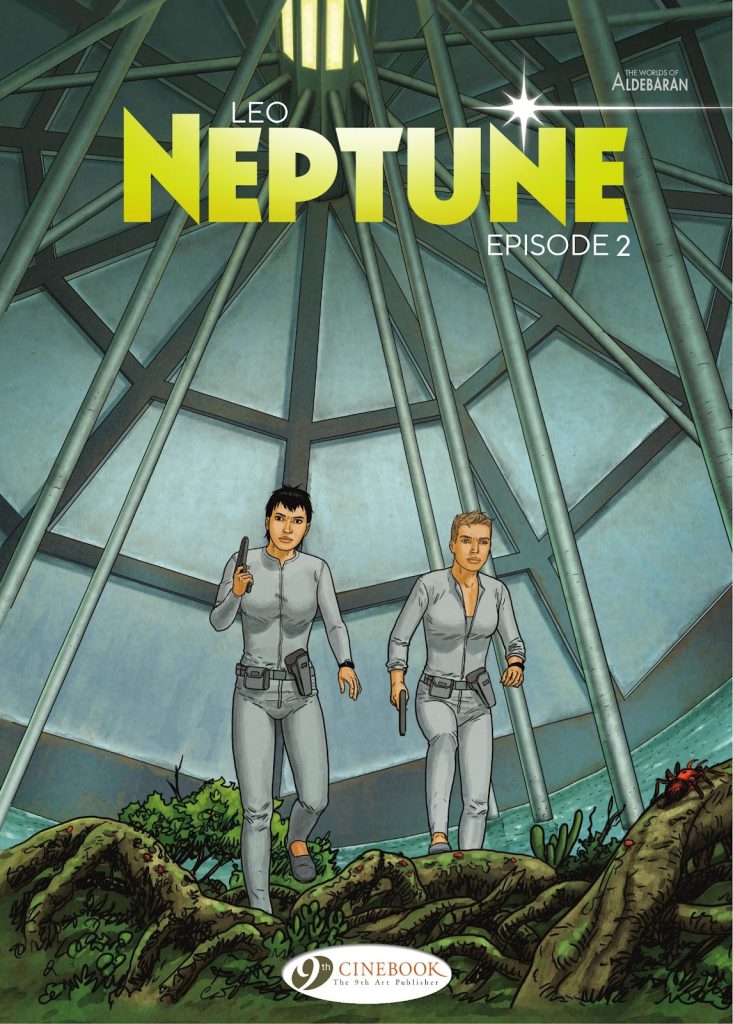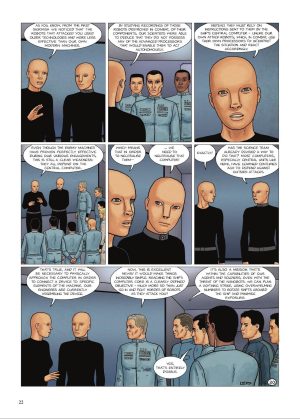Review by Karl Verhoven
There’s a long backstory to how cover featured Kim Keller and Marie Servoz arrived at their positions, but while it may have complicated Neptune Episode 1, this is more straightforward. It’s been established that they’re the only two people qualified to engage safely with the inhabitants of a vast spacecraft in the vicinity of Neptune. Humans exist in one section, seemingly unaware of the robots controlling the vessel.
Leo is a creator who considers situations well beyond the usual SF action tradition, but the downside is long explanations to cover all bases as per the sample art. His greater concern is human interaction with other species, although fans may be disappointed almost none of his incredible creatures feature here. Leo doesn’t present a completely idealised future, but is certainly on the optimistic end of the spectrum when it comes to the fate of humanity, and this concentrates on other themes he frequently features, primarily the value of exploration and communication.
While the story is wordy and some awkward dialogue still occasionally prompts wincing, this is considerably stronger than the set-up in Episode 1. The stiffness of the people in Leo’s art can distract from how good he is at inducing senses of scale and wonder to the exploration and encounters. There’s also enough action to satisfy, and Leo’s explanation for Earth’s spate of flying saucer sightings from the 1940s onward is neatly incorporated into his themes. While at times Leo would rather explain events than show them, he also features effective wordless sequences.
An extrapolation of AI features, and dangers are highlighted. “An unforgivable loophole in its programming allowed it to consider the ship’s integrity more important than the lives of its occupants” is a horrific explanation, and this becomes a testament to both human ingenuity and the value of trust within life-affirming circumstances. At the same time Kim again finds herself central to a monumental events, with only the final two pages aimed solely at readers who’ve been following the full continuity.
When Leo gets it right, he gets it right, and this is one of the strongest outings in the Aldebaran cycle since the initial surprise of his earliest volumes.





